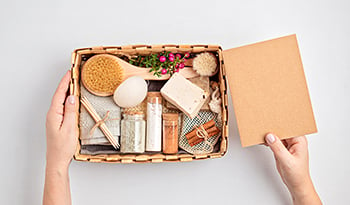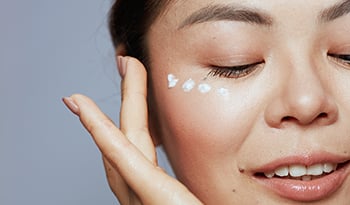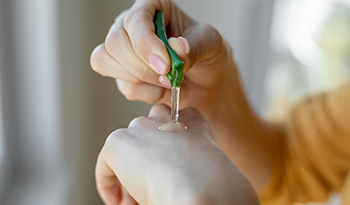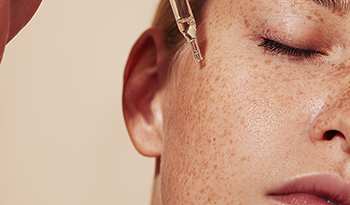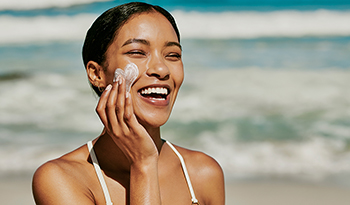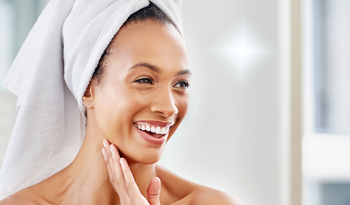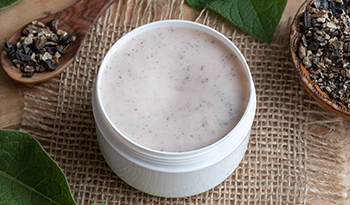5 Things a Dermatologist Does Every Night
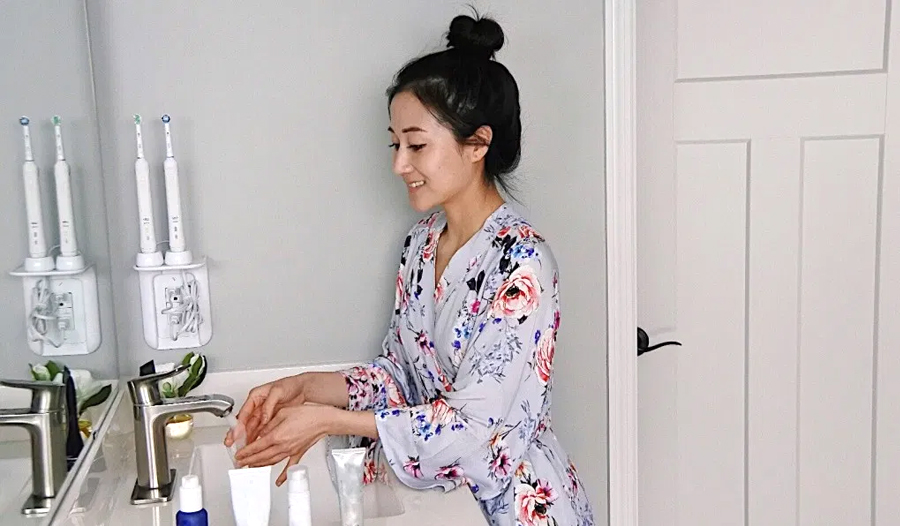
As a dermatologist, I’m religious about my skincare routine. Nighttime is when our body detoxifies and repairs itself, and that includes our skin. We should take advantage of this opportunity to provide our skin with essential nutrients so it can continue to be in its optimal state.
Throughout the day, our skin is exposed to ultraviolet radiation, pollutants, and other stressors that increase oxidation and damage. Over 80% of the aging on skin is external, meaning things that we can control. Over time, if your skin doesn’t receive the care it needs, it will age a lot faster, leading to leathery and wrinkly skin, fine lines, age spots, and an uneven complexion.
Although there are many “anti-aging” products out there that can improve the appearance of your skin, there is no true age reversal. Skin aging is best prevented, and a lot of that prevention can happen at night. These are the five things I always do before I go to bed to keep my skin healthy and glowing, and the products I swear by.
Going to bed with makeup on is a big no-no. Makeup, along with oil and dirt, that has built up throughout the day will clog pores and cause acne if left on overnight. Over time, this will lead to enlarged pores.
I remove my makeup nightly through double cleansing. I use a cleansing balm from Heimish to first remove all my makeup. It’s gentle and effective, and even removes waterproof mascara and eyeliner. I follow that with any gentle cleanser made for dry and sensitive skin to remove the balm and any other oil and debris on my face.
On days I’m not wearing a ton of makeup, I will first use Garnier Micellar Cleansing Water to effectively remove dirt and debris, followed by a gentle cleanser. In the winter, I stick to gentle cleansers; in the summer, I switch to a salicylic-acid based cleanser because my skin is oilier in the warmer months.
After cleansing, I gently pat my skin dry with a towel. It’s important to always avoid hard rubbing, which can cause microtrauma to skin and increase wrinkles over time.
Serums are potions in a bottle, often containing high concentrations of active ingredients. There are serums made for different skin concerns, like acne, discoloration, or aging.
I personally love using hyaluronic acid serums nightly to plump my skin and improve the appearance of fine lines. In the morning, I will use an antioxidant serum containing vitamin C to help prevent skin from environmental damage. Since serums have all that goodness, I make sure they’re the first thing that goes on my skin after cleansing.
Retinoids are vitamin A derivatives that are the holy grail among dermatologists. Their effectiveness for treating acne, improving complexion, and diminishing fine lines and wrinkles has been shown in many clinical studies.
There are many different formulations of retinoids available, including prescription and over-the-counter. The prescription form is usually recommended for people with acne.
The over-the-counter products are mostly retinols, which are chemically-modified versions of prescription retinoic acid. While they are not generally as effective for acne, they have similar anti-aging benefits to prescription, but are less drying and usually better tolerated.
I alternate between a prescription retinoid and a retinol serum, and use a separate eye cream formulated with retinoids. It’s important to use a product specifically for the eye area, as these have been tested to ensure they are less likely to cause irritation. Regular retinoid creams can cause eyelid dermatitis.
Retinoids should be applied after serum. The most common side effects of these products are dryness and irritation. I recommend starting slow if you’re new. Always apply sparingly to the entire face, and consider using only a few times a week at first—you can increase to nightly if your skin tolerates it.
Moisturizers help to add water back into our skin. When our skin is dry, wrinkles and fine lines are more pronounced. More importantly, microtears can occur in dry skin, compromising our skin barrier. Moisturizing at night is a must, and for those with dry skin, in the morning, too.
I recommend picking a moisturizer that suits your skin concerns and skin type. For those with oily or acne-prone skin, for example, consider lighter formulations or even gel creams that absorb faster and don’t leave a greasy residue. Look for products with non-comedogenic labeling, meaning they will not clog pores. Stay away from oils, especially coconut oil, which doesn’t truly moisturize the skin and is notoriously known to clog pores.
For those with sensitive skin, look for moisturizers that are hypoallergenic and fragrance-free. For those with mature skin, a thicker moisturizer containing hyaluronic acid and ceramides—natural lipids our skin makes that we lose over time—can help to temporarily plump skin and reduce the appearance of wrinkles.
Your lips and eyes are areas that need special attention but are often forgotten. When we are fatigued, our eye area is the first place to show it. The skin around our eyes is more delicate than the rest of our face, so wrinkles and fine lines develop more quickly there.
Eye creams are more than just moisturizers in a small package. They are specially formulated and tested for the more sensitive eye area. There are various formulations including the ones with retinol I mentioned above for fine lines, including roller eye treatments with caffeine to help depuff. I use eye creams twice daily.
Your lips also need some love. They can dry out easily, and dry and chapped lips can not only crack and become painful, but they also make applying lip color more challenging.
Lip care is a must, but it doesn’t have to be fancy. I use good old-fashioned petroleum jelly to keep mine hydrated. I usually apply it as the last step of my nightly skincare routine. If needed, I will also apply it throughout the day.
I also exfoliate my lips weekly to remove any dead skin buildup. I make my own lip scrub by mixing brown sugar with petroleum jelly. After exfoliating, I wash it off and reapply straight petroleum jelly to lock in the hydration.
Hopefully, you can use my nightly skincare routine to start making and seeing changes in your own skin. We only receive one skin in our entire lifetime so it’s important for us to do all that we can to care for it!
DISCLAIMER:This Wellness Hub does not intend to provide diagnosis...














































































 Table of Contents
Table of Contents



